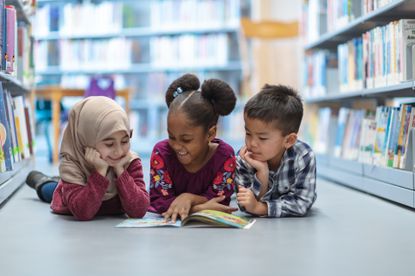5 Culturally Responsive Teaching Strategies
5 Culturally Responsive Teaching Strategies
Let’s be honest, there is not one step we can take that will fully engage every student. Our classrooms are made up of diverse learners with different backgrounds. Because classrooms have a variety of learners, we need to equip ourselves with several highly suggested strategies to embed into our practice. This will allow us to be more effective in today’s ever-changing classroom.
Get to know your students
Every year we get a new group of students and more than likely, what worked last year, will not work this year. Start the year off by getting to know your students.
- Hand out surveys
- Ask about their interests
- Have open discussions
Gather the information, review it, and adjust your teaching style to best meet the needs of your students.
Make math problems relevant
Students enjoy connecting to learning in the classroom. What better way to grab their attention by adding their name to the story problem, connecting their interests, such as the number of points of a famous basketball player or referencing diverse cultures by determining the population, food or weather.
Invite guest speakers
Guest speakers are an important part of the educational experience for students. They allow students the opportunity to have real-world life experiences from someone who has been there. They get to see and hear the perspective of the guest speaker.
One important benefit of a guest speaker is the enhancement of the students’ educational experience. They get a glimpse into the life of the speaker, which they can’t get anywhere else. They also get to make a link between what they learn in their textbooks and what they learn from the speaker. Research states that it helps students build important connections between what they are learning and the real world.
Speak to every student
In 2018, Edutopia posted an article by Youki Terda
Welcoming Students With a Smile
The article addresses the benefits of greeting students every day. Welcoming students will not only have a positive impact on students, but it can also improve a teacher’s mental state. Research shows that over 50 percent of educators feel stressed by students' lack of engagement or their disruptive behavior. In addition, there is a 2014 study that “teachers report classroom management to be one of the greatest concerns in their teaching, and leads to burnout, job dissatisfaction, and an early exit from the profession.” If we take the time to greet students and welcome them into our classrooms, this can make a difference. Research shows that it can be beneficial for students and teachers to focus on creating a positive classroom environment.
Turn learning into a game
If someone asked you if you wanted to play a game or sit through a long lesson or lecture, which would you choose?
I’m sure you’d say “game.” Unless the teacher is entertaining, many lessons go in one ear and out the other. Our brains just don’t focus as well when we are listening without being engaged in the content.
Transitioning your most rote learning content into something fun that creates better learning retention doesn’t have to be an expensive venture.
Successful game design involves an open mind and a lot of brainstorming of ideas. Then you select your delivery method and think simple. If you make your game too difficult to understand and play, it will take the fun out of the experience for the students.





